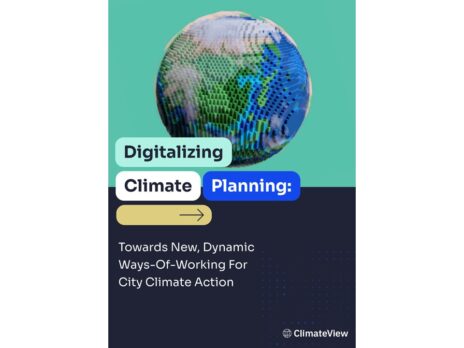

Cities aspire to be at the leading edge of the green transition, and municipalities around the world have already drawn plans to reach net zero, with trillions of dollars earmarked for climate investments and urban financing in the years to come.
Translating these plans into practice, however, is proving challenging. Given the limited tax revenues of local governments, the mooted funds are often slow to materialise, and $9 out of every $10 needed for the city climate transition is yet to be invested.
Administrations are turning to public markets to close the financing gap. Governments remain the largest issuers of green bonds globally, even as companies and financial services race to tap into the market with sustainability-linked bonds. The NextGenerationEU green bond programme of up to €250bn will see the EU become the largest green bond issuer worldwide. The Climate Bonds Initiative forecasts that over $1trn will be raised using green bonds in 2023 alone.
But in the rare event that fundraising goes well, city planners still face a host of obstacles when it comes to designing, realising and developing sustainable cities. Plans and budgets are often misaligned, and coordinating between an array of stakeholders across a patchwork of projects with dramatically different expectations can often feel like a game of chess.
Tomer Shalit, CPO and founder of Swedish climate tech company ClimateView, believes that the key to accelerating the flow of capital into city climate action is to clearly articulate the returns of this investment not just for financial backers or political parties, but also for everyone in the city.
“Stories can create a powerful vision of the future,” he says. “When these stories are backed by numbers they are even stronger. I prefer to talk more about the health benefits in dollars, with hard facts and clear numbers to back up that vision.”
The communication quandary
Urban areas make up less than 2% of the earth’s surface area, but they’re responsible for around 70% of gas emissions. Given the scale of the climate catastrophe that cities are facing, the sheer amount of expertise needed to unlock funding for greening projects is of concern.
“The entire way of thinking about climate transition in cities has to change,” says Shalit. “We have civil servants working on climate strategy who are thinking ‘the city budget was 20 million last year, but the things we’re trying to do will need 25’. They’re trying to work within the confines of what’s available, and what they really need to do is say ‘to make this happen, we need a billion‘.”
This change of mindset must not be limited to governments. Without the support of markets, it will be impossible to fund the green transition on a large enough scale and in a short enough time frame to prevent the worst effects of climate change.
In this regard, Shalit is hopeful. He sees backing for green projects increasing as confidence in the future of a zero-carbon economy grows. After a record-breaking 2021, $245bn was reportedly raised by green bonds in the first half of 2022 alone, with further growth expected as government emissions targets loom and markets accelerate out of the pandemic.
“Momentum creates momentum. Once one sees where things are heading, then obviously more capital wants to go there too, because there’s more opportunity there. Similarly, we hope that we’ll get to a tipping point for fossil fuels where they’re no longer such a profitable investment, because that’s how markets work,” he says.
Engendering this kind of systems-level change within the hermetic worlds of finance and government is no easy feat. The biggest challenge, however, will be getting the two parties to communicate.
“The climate people don’t know about finance, the finance people don’t know much about climate, and they don’t speak very well to each other,” Shalit laments. “It’s interesting that the climate action plans, which have been around for many years now, are lacking a budget. What kind of plan doesn’t have a budget? Except when it comes to climate action, and for some reason that’s OK,” he adds.
Shared challenges
ClimateView believes that giving climate strategists and financiers a mutual language will empower both parties to excel in their respective disciplines, while collaborating more successfully to build the cities of the future.
ClimateOS, its impact intelligence platform, gives cities a wealth of data to help model scenarios for their transition, quantify the amount that has already been achieved, and balance emissions reductions with the key activities of their local economy.
As well as communicating with markets, cities must also enter into a dialogue with one another to share best practices and learned lessons.
By furnishing climate experts and city planners with data insights from an advanced analysis engine, ClimateOS aims not only to set a compelling and measurable investment case but also to help cities anticipate and plan the trickiest parts of its transition.
“One of the most exciting things about cities compared with companies is that they face largely symmetrical challenges,” Shalit points out. Whereas a company’s path towards climate resilience will be determined largely by its sector and unique operations, most cities are alike at least in terms of governance structures and public services.
Still, nearly every city is ahead in one area: Amsterdam and Copenhagen are known for their cycle strategies, for example; Oslo is known for its electrified public transport fleet.
“There’s a lot of inspiration to draw on out there. You can study what created tipping points elsewhere, and how other cities which have specialised in a certain area set about tackling a problem. I would actually go so far as to say that cities will only be able to transition fast enough if they share experience and knowledge at an unprecedented scale,” Shalit says.
Finding the bigger picture
Bridging the gap between cities’ ambitions and the action and capital needed to realise this need not mean a wholesale overhaul of the existing system. Metropolitan success stories are becoming ever more common, and the link between a green city and higher standards of living is becoming clearer to citizens, governments and markets.
Shalit is convinced that those with an understanding of the benefits of green projects for everyone in society are in the strongest position to realise their plans.
“Climate strategists and green financiers need a macro view of society: all the stakeholders involved in the transition. Now interestingly, cities are actually quite used to doing this, whereas companies aren’t. Companies focus on profits. But a public servant in a city is just that: a public servant. They have to think about how their actions will impact the whole of society,” Shalit begins.
ClimateView helps administrations achieve this bird’s-eye view by determining how much has already been achieved by traditionally siloed sustainability efforts across the city.
“And it’s in a city’s best interests to do this. Factoring in the efforts of other stakeholders means you can also credit your city with things that have already been done, which helps with fundraising. It’s much easier to argue for a billion if you can say that 200 million has already been invested,” he adds.
Investors, too, need to come to terms with the far-reaching impact of urban transitions, not just in terms of immediate profits, but also in the returns implicit in a healthier, more desirable city. The C40 cities, a network of nearly 100 cities that have committed to halving their emissions by 2030, predicts that this target will help create 50 million new jobs.
“It’s actually quite obvious if you take a step back and think: how do financial markets work? They’re all about quantitative analysis. They want to understand how sensitive their investment is. When you invest in a cycle path, it creates a lot of other impacts, and investors must try to understand the assumptions surrounding that project.
“How sensitive is the assumption of this impact based on a future prediction of energy prices, or a future prediction of carbon prices, for example? Perhaps it’s easy enough to calculate the effects of a big carbon capture project in isolation. But when you’re doing a basket of projects within an urban space like infrastructure for cycling or public transport networks – those things are more interconnected – it’s crucial to get a bigger picture and see how they fit into the system.”







